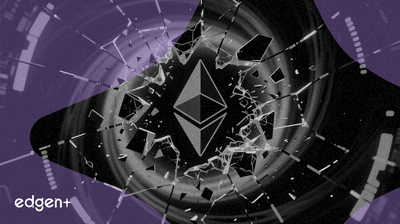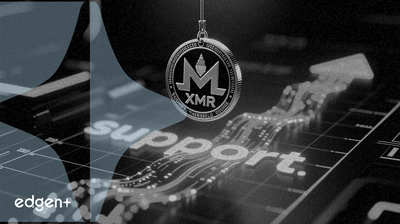Related News

SUI and ENA Lead Over $139M in Weekly Token Unlocks, Pressuring Markets
## Executive Summary This week, the cryptocurrency market is bracing for a significant increase in the circulating supply of several tokens, led by **Sui (SUI)** and **Ethena (ENA)**. These scheduled events will unlock more than $139 million in previously restricted assets. Token unlocks are a critical component of a project's tokenomics, representing a planned inflationary event that can exert considerable pressure on asset prices. The market's reaction will be a key test of investor demand and the perceived long-term value of these protocols. ## The Event in Detail The two most prominent unlocks of the week are: * **Sui (SUI):** On December 1st, the Sui network unlocked 55.54 million SUI tokens, valued at approximately $85 million. This release constitutes about 0.56% of the token's circulating supply. * **Ethena (ENA):** On December 2nd, the Ethena protocol is scheduled to unlock tokens worth an estimated $54.3 million. This injection of new supply represents 3.04% of its current circulating supply. This is part of a larger, phased release schedule that extends through 2026. Other tokens, including **SANTOS**, **WAL**, and **RED**, are also slated for smaller unlocks throughout the week, contributing to the overall increase in liquid supply across the market. ## Market Implications The primary implication of a large token unlock is the potential for increased selling pressure. As tokens are distributed to early investors, team members, and community reserves, a portion of these assets are often liquidated on the open market. This sudden increase in supply, if not met with corresponding demand, can lead to downward price pressure. For **ENA**, the unlock of 3.04% of its circulating supply is a material event that could trigger short-term volatility. The market's ability to absorb these new tokens without a significant price drop will depend on current market sentiment, the trading volume of the asset, and the behavior of the recipients of the unlocked tokens. While scheduled and transparent, these events remain a key focus for traders assessing supply-side risks. ## Tokenomics and Vesting Schedules A deeper look at the tokenomics reveals the mechanics behind these unlocks: * **Sui (SUI):** The protocol has a total supply capped at 10 billion tokens. The current unlocks are part of a long-term vesting schedule for various stakeholders, including early contributors (72-month vest), Series A investors (11-month vest), Series B investors (24-month vest), and a Community Reserve (82-month non-linear vest). These structured releases are designed to manage inflation over several years. * **Ethena (ENA):** Over 6.8 billion ENA tokens are currently in circulation, with nearly 6 billion remaining locked. These locked tokens are designated for the foundation, core contributors, investors, and ecosystem incentives, with vesting periods extending up to 48 months. The phased release strategy, continuing through 2026, ensures a gradual distribution rather than a single, large-scale shock to the market. ## Broader Context Token unlocks are a standard and necessary feature of the digital asset landscape, allowing projects to reward early backers and fund ongoing development. They are functionally similar to the expiration of lock-up periods for newly public companies in traditional equity markets. For investors, these are not unforeseen events but are calendar-driven data points that factor into risk management and trading strategies. The scale of the SUI and ENA unlocks places them on the watchlist for the entire market, as their price performance post-unlock can serve as a barometer for investor sentiment and the market's capacity to absorb new token issuance.

Yearn Finance's yETH Exploited; $3 Million in ETH Funneled to Tornado Cash
## Executive Summary An apparent attack on Yearn Finance's yETH, a derivative product within its liquid staking ecosystem, has resulted in the theft of approximately $3 million in Ethereum (ETH). The malicious actor subsequently transferred the entirety of the funds to Tornado Cash, a decentralized cryptocurrency mixing service, to obscure the assets' illicit origin. This event highlights the persistent security challenges facing the decentralized finance (DeFi) sector and places a renewed focus on the systemic risks associated with Liquid Staking Tokens (LSTs), which have become foundational collateral across numerous protocols. ## The Event in Detail The security incident unfolded with an exploit targeting Yearn Finance's liquid staking token, yETH. Following the breach, on-chain data confirms the movement of the stolen assets, valued at around $3 million, to Tornado Cash. The transfer was executed in batches, a common tactic used by hackers to complicate tracking. The use of Tornado Cash is a deliberate money laundering technique designed to break the traceable link between the attacker's wallet and the initial exploit, making fund recovery exceedingly difficult. ## Deconstructing the Financial Mechanics This exploit centers on Liquid Staking Tokens (LSTs), which are financial instruments representing a claim on staked cryptocurrency. In this case, yETH represents ETH staked through the Yearn Finance protocol. LSTs allow investors to gain staking rewards while retaining liquidity, enabling them to deploy these tokens as collateral in other DeFi applications, such as lending and borrowing markets. The systemic importance of these instruments is significant. Data shows that major LSTs, such as Lido's stETH, account for a substantial portion of collateral in the DeFi ecosystem, representing approximately 33% of deposits on platforms like Aave V2 and constituting $9.5 billion in collateral across DeFi lending markets. However, their composability—the ability to be used across multiple protocols—also expands the potential attack surface. As seen in the Yearn incident, vulnerabilities can arise from the complex interactions between different smart contracts. ## Market Implications The immediate impact of this exploit is a blow to investor confidence in **Yearn Finance** and, by extension, the security of its associated products. Such events often trigger heightened scrutiny of a protocol's security audits and risk management procedures. For the broader market, it serves as a critical reminder of the inherent risks in the DeFi space, particularly with newer or more complex derivative products. The incident could lead to a "flight to quality," where users consolidate assets into larger, more established LST protocols perceived as having more robust security, such as **Lido**. Furthermore, it underscores the central role that mixers like **Tornado Cash** continue to play in the crypto-based illicit finance economy, a challenge that regulators and developers continue to grapple with. ## Broader Context This attack is not an isolated phenomenon but part of a wider pattern of exploits in the DeFi sector. The core **Ethereum** blockchain itself remains secure; the vulnerabilities lie within the application layer—the smart contracts that create these complex financial products. The incident with yETH fits into a broader narrative of risks associated with LSTs, which include smart contract bugs, centralization risks tied to a small number of node operators, and protocol governance vulnerabilities. While liquid staking offers clear benefits for capital efficiency, its rapid integration into the fabric of DeFi means that a single point of failure can have cascading effects across the entire ecosystem, reinforcing the need for rigorous security practices and risk diversification.

Monero (XMR) Approaches Key Support Level, Technical Analysis Indicates Potential 16% Upswing
## Executive Summary An analysis circulating on the TradingView platform suggests that Monero (XMR) is positioned for a potential 16% price increase toward the $465 mark. This bullish forecast is entirely contingent on the cryptocurrency holding a critical support level identified on its weekly chart. The scenario highlights the application of classical technical analysis, specifically the principles of support and resistance, which are widely used by traders to identify potential market turning points. ## The Event in Detail The forecast, authored by a TradingView analyst under the name "MadWhale," focuses on the **KUCOIN:XMRUSDT** trading pair. The core of the analysis is that if Monero successfully maintains its current price floor—described as its "last support"—a subsequent rally is a logical expectation. This conclusion is drawn from an examination of historical price data, primarily using weekly candlesticks to identify significant long-term price levels. ## Deconstructing the Technicals: Support and Resistance Support and resistance are foundational concepts in technical analysis that identify price levels on a chart expected to attract a maximum amount of buying or selling. * **Support:** A support level is a price point where an asset tends to stop falling, as demand and buying interest are expected to be strong enough to overcome selling pressure. In the case of XMR, the current price is testing such a level, which has historically prevented further declines. * **Resistance:** A resistance level is the opposite—a price point where a rally tends to pause or reverse due to a concentration of selling interest. For XMR, the $465 target is projected as the next significant resistance zone. These levels are typically identified by looking at past price action, with multiple historical bounces from a specific price zone strengthening its validity as support or resistance. The use of a weekly chart, as cited in the analysis, is common for identifying more significant, long-term levels. ## Market Implications A successful hold at this support level, followed by a rally, would validate the technical pattern and likely attract further bullish momentum from traders who follow similar strategies. However, the scenario also presents a clear risk. Should the support level break, it would invalidate the bullish thesis. According to technical principles, a broken support level often transforms into a new resistance level, as sellers may use any subsequent re-test of that price to exit positions, potentially leading to further price declines. ## Broader Context This analysis of Monero is a practical example of how many participants in the cryptocurrency markets make trading decisions. Unlike equities, which are often valued based on fundamentals like earnings and revenue, cryptocurrencies are frequently traded based on technical patterns, market sentiment, and liquidity flows. The reliance on indicators like support, resistance, and candlestick patterns is a dominant strategy for navigating the inherent volatility of the digital asset class. The current price action of XMR serves as a live test of this widely-followed trading methodology.
